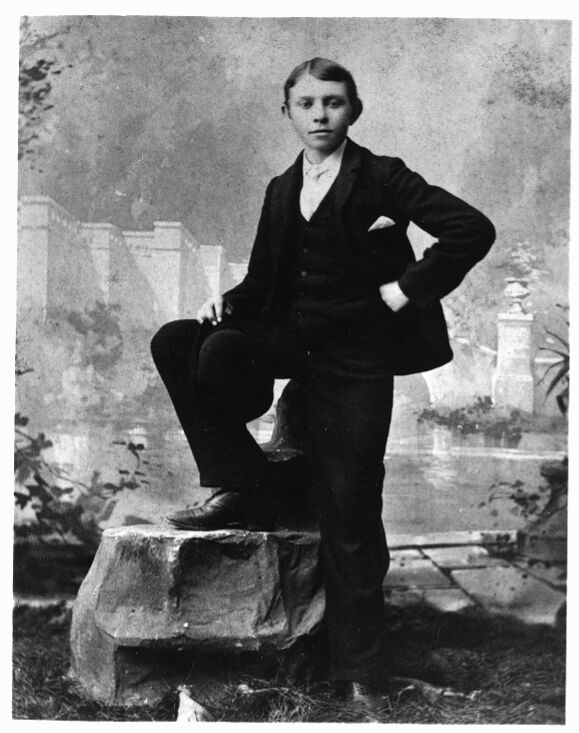|
_______________________________________________________
#6 15 April 2024
Por From the Rare Book & Manuscript Library of the University of Illinois, Urbana-Champaign
Humble Beginnings
By John W. Quinley Dear Readers,
Carl Sandburg’s working-class parents believed that in
America, even a poor boy could grow up to be someone special. Carl was born in
1878 on a cornhusk mattress in a three-room house in Galesburg, Illinois. Most
folks worked for a living with their hands in town or on nearby farms. On the
streets there were horses, not cars; and many first- and second-generation
immigrants spoke with an accent or in their native language, like the Swedish
Sandburgs. But Carl’s hometown didn’t lack sophisticated culture. Sometimes
called the “Athens of the Corn Belt,” it was home to two small liberal arts
colleges (Lombard and Knox) and a business school. And as a major hub for the
railroad, the town routinely drew in vaudeville entertainers, politicians,
public speakers, opera stars, magicians, circus acts, evangelists, and Broadway
shows. Sandburg took advantage of all he could—even carrying buckets of water
for elephants in the circus so he could afford a ticket. Sandburg’s education was
rooted in the town itself more than in school. He learned by doing. As a boy of
eleven, he cleaned offices and delivered newspapers; and after eighth grade, a
severe national economic depression compelled him to drop out of school to help
support the family. In his autobiography,
Always the Young Strangers, he wrote that the
Sandburg children knew it was hard times when their father “gave us each only a
five-cent bag of candy, a large five-cent orange, and a long sad look. We
honored the oranges by eating all the insides, pulp and peelings.” It wasn’t easy for him to find work during the hard
economic times of his youth. With other boys and grown men, he competed for
jobs, even lowly paid part-time ones, and gladly took whatever job he could
find. “No work was beneath his dignity or, he would have argued, beneath anyone
else’s.” One of his jobs was milking cows and delivering milk,
where part of his pay was dinner with the owner’s family. He worked in a
brickyard and icehouse; washed out pop bottles, harvested wheat, rented out
rowboats at a local lake; and carrying luggage and shining shoes as a porter at
Galesburg’s premiere hotel. Through his many jobs, Sandburg came to know most of
the people in Galesburg, as he put it, “from the most respected to the most
flagrantly immoral and the laziest, no-account bum.” He writes about how these
early experiences helped him understand the literature he would later read in
college, and helped shape his poetic vision: In those years as a boy in that prairie town I
got an education in scraps and pieces of many kinds, not knowing that
they were part of my education. I met people in Galesburg who were
puzzling to me, and later when I read Shakespeare, I found those same
people were puzzling him. I met little wonders of many kinds among
animals and plants that never lost their wonder for me, and I found
later that these same wonders had a deep interest for Emerson, Thoreau,
and Walt Whitman. I met superstitions, folk’s tales, and folklore while
I was a young spalpeen, “a broth of a boy” long before I read books
about them. All had their part, small or large, in the education I got
outside of books and schools. Thanks for reading,
John Quinley is the author of Discovering Carl
Sandburg: The Eclectic Life of an American Icon and is a former docent at
the Carl Sandburg Home National Historic Site in Flat Rock, North Carolina.
| ||||||||||||||||||||||||||

